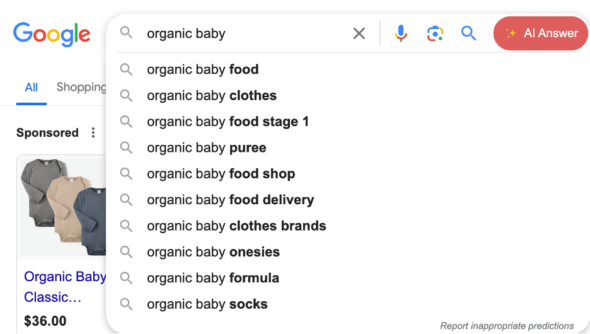Creating SEO-friendly content is important, but it’s absolutely critical when you’re targeting niche markets. And for freelance writers, specializing in niche markets is a lucrative move.
Find out how to identify and implement SEO for success.
Simplifying the Art of Finding Keywords and Creating SEO-Friendly Content
Whether you’re writing content for your own business or you’re a freelance author offering your services, it’s vital to master SEO-friendly content writing to perform well in niche markets.
You need to learn how to implement SEO principles while writing your copies to ensure your content is more visible in search engines and drives organic traffic to your clients’ websites.
Plus, SEO writing also attracts backlinks from reputable websites, which also helps increase search engine rankings. Those writers who excel in SEO bring more value to the table, which allows them to secure more clients. But, how should you really proceed when you’re focusing on niche markets only?
Understanding Niche Market SEO

Within modern e-marketplaces, there are specialist niches that offer bespoke products or services. These markets often have a separate identity that sets them apart from the general market and requires niche SEO.
For SEO writers, creating niche content means focusing tightly on a specific audience and producing highly tailored content to meet distinctive requirements. To gain organic traffic, it is therefore vital that the SEO for niche market sites aligns well with the interests of their audience and their search intent.
By understanding the purpose of the searches, writers can create content that matches search inquiries. Matching content with intent this way ensures it is relevant and, therefore, valuable, which helps increase rankings.
At the same time, it’s crucial that content creators use SEO tools, like some daily rank tracking software, to monitor how their pages perform in search engines. If it loses rankings, they can quickly identify the issue and tweak the text to help regain its position. But this becomes possible only when they have identified the right keywords and implemented them properly.
Keyword Research for Niche Topics
SEO for niche sites involves keyword research. In fact, finding niche market keywords is essential and critical to the success of any SEO strategy.
Used in high-quality content that reflects the interest of the audience and its search terms, keywords make content visible to search engines and attract the target audience. Keywords also help establish the site as an authority, which encourages engagement and lifts conversion rates.
Given how essential effective keyword research is to niche marketing, there are several tools available. Google Search Console and Bing Webmaster Tools are good platforms to start with. In addition to providing valuable information on the general health of the site, this software reveals the number of impressions and clicks the site received and which phrases it ranks for.

Other tools for creating SEO-friendly content include:
1. Ahrefs
This is a comprehensive tool with a robust Keyword Explorer feature. It helps generate thousands of keyword ideas and analyze their difficulty for traffic potential. It allows users to filter keywords by search volume to find those that best suit the niche.
2. SEMrush
SEMrush is a suite of tools designed for keyword research. It includes the Keyword Magic Tool and Keyword Gap for analysis. Thousands of keywords can be generated from one seed keyword. It also offers a useful Compare feature so that the niche keywords found can be compared against those used by competitors, identifying any gaps and opportunities.
3. KW Finder
KW Finder suits long-tail keyword research well. Along with offering detailed metrics, search volume, and competitor analysis, KW Finder enables filtering by location and other useful criteria.
4. Google Keyword Planner
Google Keyword Planner is a free tool especially effective for finding related keywords and terms. Like the other tools, it also provides search volume data and competitor insights and generates keywords from a seed.
5. AnswerThePublic
AnswerThePublic works a little differently from other tools and visualizes search engine inquiries. It finds question-based keywords and generates lists of related keywords and phrases, making it particularly useful for driving traffic.

Practical Techniques for Identifying Relevant Keywords in Niche Markets
Using specific tools and software solutions is a great idea, but you still need to learn how to identify the best keywords. For instance:
1. Long-Tail Keywords
These are particularly long phrases. Because they target users, they tend to have lower search volumes and higher conversion rates. For example, the search term ‘running shoes’ would be ‘running shoes for flat feet’ as a long-tail keyword.
2. Competitor Keyword Analysis
Competitor Keyword Analysis unearths opportunities. For example, when a competitor ranks well for ‘eco-friendly water bottles’, it leaves a gap for ‘sustainable water bottles’. SEMrush excels at finding those gaps.
3. Leveraging Google Autocomplete and Related Searches
This is perhaps the easiest way to find people’s search terms. Simply enter a broad term into the search and note the suggestions.
For example, ‘organic baby’ produces search terms for ‘organic baby formula’, ‘organic baby clothes’, and ‘organic baby food’. Use Google Keyword Planner to handle it better.

4. Question-based Keywords
This technique utilizes the user’s habit of asking specific questions. Because of its tight focus, it helps writers produce the most relevant SEO-friendly content. AnswerThePublic is the best option for this.
5. Explore Niche Forums and Communities
These can be sites like Quora or Reddit. It helps writers determine the vocabulary and terminology specific to the niche.
Creating Compelling and Relevant Content
When writing articles, focus on your story-telling skills. It’s essential because humans respond better to stories and find them more engaging.
However, you need to keep a few other things in mind to write the most compelling content on whatever niche topic you’ve selected. For instance:
- Always identify your audience by researching their interests and pain points.
- Conduct extensive research with facts and statistics for your target keyword and topic.
- Pick the most engaging title for your article.
- Take your time to decide on the tone and language you want to use in your article.
- Identify unique angles you can introduce in your article to tackle information gaps.
- Use several subheadings, but keep them concise.
- Work on delivering valuable and actionable content.
- Maintain a conversational tone like you’re talking to your reader.
- Avoid jargon and use bullets, etc., to make your content scannable.
- Always finish strong with a call-to-action that directs readers to additional resources.
Ways to Include Targeted Keywords Naturally within Content
Now, it’s important to learn how to approach every new article. However, understand that you can’t make it work in search engines unless you implement targeted keywords naturally in your niche content. Here are a few tips to help you in this regard:
- Use keywords in the title, meta descriptions, and subheadings, and preferably in the first half of your article.
- Optimize Image Alt Text by using the right keywords to boost search engine visibility.
- Take advantage of Latent Semantic Indexing (LSI) keywords and other semantically related key phrases to clarify the context of your content for search spiders.
- It is crucial to avoid penalty-attracting keyword stuffing and instead aim for a keyword density between 1 and 2%. Writing needs to have a high readability. It should be natural with synonyms and naturalized variations of the keywords so that ‘sustainable living tips’ would include the variation ‘ways to live sustainably’.
Bonus tip: You can use special tools to check the image SEO. For example, one such tool is Image Optimization Checker by Sitechecker.
Optimizing Content Structure and Formatting
Your content loses its value if it isn’t visible in search engines. Therefore, you need to keep some SEO best practices in mind when you write articles to rank in Google. These include:
- Use headings and subheadings to divide content into various scannable sections.
- Create compelling titles with your primary keyword included logically in it. Ensure the title is no longer than 50-60 characters.
- Summarize your content for search engines by writing killer meta descriptions, which should include your keywords and be within 155-160 characters.
- Focus on writing shorter paragraphs and sentences, with no more than 3-5 sentences per paragraph.
- Avoid walls of text by using numbered lists and bullet points, but use italics and bold sparingly.
- Always optimize your content for featured snippets by directly answering the main question early in the article.
Take Advantage of Long-Tail Keywords and Semantic SEO
Long-tail keywords may have limited search volume, but the competition to rank for them is on the lower side as well. Therefore, they deserve your attention, and together with semantic SEO, they can help your content rank quickly.
Here are some other benefits of using long-tail keywords:
| Advantages | Explanation |
| Lower Competition | Very few keywords have over 100,000 searches, making long-tail keywords easier to rank for. |
| Higher Conversion Rates | Long-tail keywords convert 2.5 times better due to more specific user intent. |
| Targeted Traffic | Targeting long-tail keywords boosts chances of ranking, attracting users seeking specific info. |
| Cost-Effective Advertising | Long-tail keywords have lower CPC rates, making them budget-friendly for freelance writers. |
Similarly, focusing on semantic SEO also has its own set of benefits. Here’s how to go about it:
| Semantic SEO Practice | Explanation |
| Topic Clustering and Pillar Pages | Create central pillar pages with related supporting content to establish authority and improve site structure. |
| Latent Semantic Indexing (LSI) Keywords | Use related terms to help search engines understand content context, enhancing semantic relevance. |
| Natural Language Processing (NLP) | Craft content in natural language to address common questions and concerns of the target audience. |
| Schema Markup and Structured Data | Implement schema to provide additional context, aiding search engines in displaying rich snippets and boosting visibility. |
Go Beyond Writing Quality Content
Writing high-quality content is never enough; it needs to rank as well. This stresses why you need to polish your SEO skills as a freelance writer. Similarly, you must learn how to implement long-tail keywords and use semantic SEO best practices to your advantage. This allows search engines to interpret and understand the context of your content and rank accordingly. Keeping all these points in mind will be the only way to get more clients and satisfy your established niche clientele.
Photo used in featured image credit: https://depositphotos.com/

